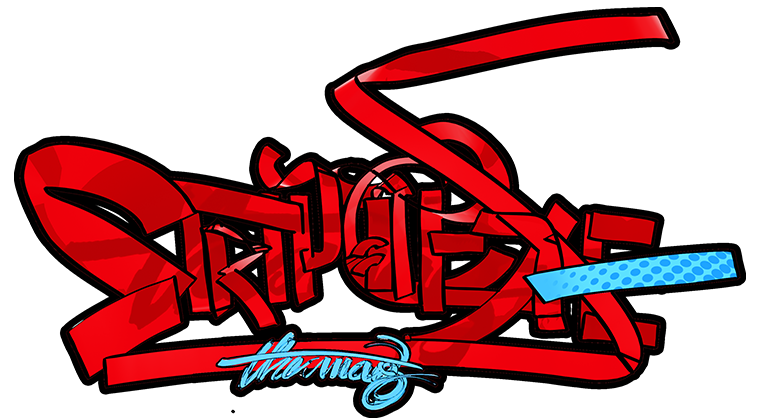Poorly Drawn Lines by Reza Farazmand
Taking a trip through time, it is not surprising to realize that like hundreds of youngsters all over the world, Reza Farazmand, the brains behind Poorly Drawn Lines (PDL), started his comic a few years ago when he was in the freshman year of college. Originally a weekly comic strip for his college newspaper, it did not take him long to understand the charms of the world of webcomics and start publishing it online. “At the time I was starting to realize that I wanted to write and make funny things for a living, but I didn’t know the comic would be such a big part of that,” he says, reliving old days. And needless to say, it has been undeniably cool for him to see his audience get bigger even though it has taken a whole lot of time and hard work to make PDL succeed as a webcomic.
With new comics hitting the site thrice a week, as a PDL fan, it is rather difficult to realize when these crudely drawn funnies become a part of your life. In fact, I don’t even know when I gave up being the person who visits the site to kill boredom and became the person who waits eagerly and impatiently for updates.
The first look at PDL, in all honesty is not something that will overwhelm you and convert you into an immediate follower. Crudely drawn funnies are a plenty online. But PDL is in no way one of those scores and scores of stick-figure comics that attempt humour and then begin to lose its charms. With the superability to make people all over the world laugh and even be inspired, it is quite difficult to explain why you lose yourself hopelessly in the simplicity of Reza’s quirky comics. And when it comes to explaining its beauty to other comic addicts, you fail miserable! Thankfully, even the creator agrees with me on this one. “Poorly Drawn Lines is a comic about a lot of things. Unfortunately I’ve never been able to come up with a better elevator pitch than that. I just try to avoid elevators mostly,” he chuckles.
A man who gave up his job for the love of comics, Reza has been a full-time cartoonist for just a year now. Though a risky move, it was one that proved to be quite a good one. With more than a year of planning before this young cartoonist took the plunge, this decision turned out to be quite a good one. Without the daily, mundane nagging routine of a job bogging him down, Reza has more time to spend on his writing and editing and that in turn has received some serious love from fans!
In conversation with Reza Farazmand, we realize that this man is as hilarious as his webcomic!
ST. How do you draw each comic? Is there an elaborate secret behind it?
RF: I kind of wish there was a specific secret, because that might make the process easier. In reality it takes a lot of hours of writing, then a lot more hours of drawing and editing. As for the art itself, I start each comic the traditional way (pencil, pen, and paper), then scan and do coloring and edits in Photoshop with my graphics tablet.
ST: How do you deal with creative barricades?
RF: The best thing for me is to just sit quietly and reflect on an idea or a joke until something clicks. I don’t put pen to paper or scribble any notes until I have most of an idea formed.
ST: A lot of people are of the opinion that there are no such things as bad comics: what is your take on that?
RF: I mostly agree with that idea. Humor is much too subjective to be categorized as either good or bad. That said, I personally appreciate humor that doesn’t rely on obvious or overdone jokes. That’s just my opinion, but when you look at comedy on a larger scale it’s often the unusual that really strikes a chord with people.
ST: According to you, what three webcomics should everyone read and why?
RF: I have too many favorites, but three that come to mind are Achewood, Gunshow, and Nedroid. Those guys have all been huge inspirations to me. Their humor is so original and unexpected.
ST: How do you find inspiration?
RF: It can come from anywhere. Sometimes I’ll think of a word or a sentence that I think is funny, and then a joke will grow out of that. Other times I’ll draw a face or a character, then something will evolve from that.
ST: You comic has inspired and made people laugh- how difficult is it to influence human emotion though your works? And how did you do it?
RF: Mind-control nanobots. I’ve already said too much.
ST: What are the advantages of having a webcomic?
RF: There are a lot of advantages to putting creative work on the internet in general. You’re able to find an audience, practice your craft, connect with other artists, and reach people in parts of the world you’ve never heard of before. I love being a part of this big digital creative movement. The internet has completely redefined how artists make and market their work, and it’s lifted any barriers to the public that might have existed before. It’s important that we keep the web free and open so it can continue to be that way.
ST: Your advice to those who want to make comics but are too scared to take the plunge?
RF: Don’t be scared, there’s no point. You either produce work or you don’t, and if you’re insecure about your stuff the only way you’re going to get better is to practice.








